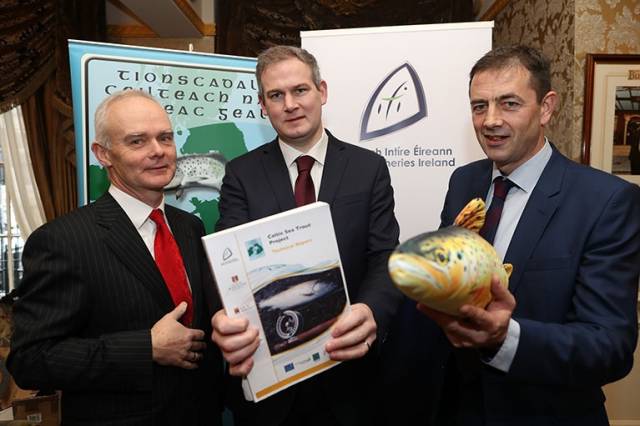Inland Fisheries Ireland has published a new report called The Celtic Sea Trout Project (CSTP) which addresses significant knowledge gaps around sea trout. This migratory trout has a significant fisheries value however some sea trout fisheries in parts of Ireland and the UK bordering the Irish Sea are suffering decline.
The project, which consisted of a multi-agency partnership investigation into sea trout stocks and fisheries of rivers entering the Irish Sea, aimed to address the knowledge gaps, and identify the causes of decline with a view to supporting potential management solutions. Current understanding suggests that the incidence of sea trout and the composition and status of their stocks is sensitive to changes in the environments in which they live. These life history features and the sea trout’s widespread occurrence, make it a unique and potentially sensitive indicator of environmental change.
The structure of the Irish Sea and the variety of rivers draining to it, ranging from the mountainous rivers of West Wales to the lowland rivers of East Ireland, meant there was a wide range of marine and freshwater environments for the study. Funded under the INTERREG IVA Ireland Wales Programme, the Celtic Sea Trout Project was the first project in Ireland and the UK to combine a variety of disciplines in the study of sea trout and their fisheries on a large scale.
Sean Kyne TD, Minister with responsibility for Inland Fisheries said, “I particularly welcome this report and the exemplary collaboration between Irish researchers at Inland Fisheries Ireland and other bodies and their international counterparts. The research has resulted in a better understanding of the Sea Trout stocks in the Irish and Celtic seas and this will underpin logical and well-informed decisions on the management requirements that are needed to safeguard these stocks into the future and to ensure the maximum social and economic contribution is secured”.
Dr Cathal Gallagher, Head of Research at Inland Fisheries Ireland said: “This is a ground-breaking multi-agency partnership investigation which aims to fill some of the information gaps around sea trout conservation. The first study of its kind, the Celtic Sea Trout Project is a wide-scale comprehensive, cross-disciplinary project which has provided valuable insight into many important research needs in this area, which were first identified at the International Symposium on Sea Trout in 2004. Its primary purpose of improving understanding of sea trout stocks in order to support better management in the freshwater and marine environments has been achieved.”
The research will improve the management and long term future of sea trout in the Irish Sea by providing information and advice for management which can be translated into fishery and conservation benefits for countries bordering the Irish Sea. It has also established a wider awareness and long term network of people working to secure the future of sea trout.
Partners in the Celtic Sea Trout Project included: Inland Fisheries Ireland, Bangor University, University College Cork, Natural Resources Wales, the Environment Agency (England), Isle of Man Government, Nith District Salmon Fisheries Board, Galloway Fisheries Trust, Annan District Salmon Fisheries Board and Buccleuth Estate (Border Esk). Subcontractors included APEM Ltd, Cefas and Fishskill Consultancy Services.































































